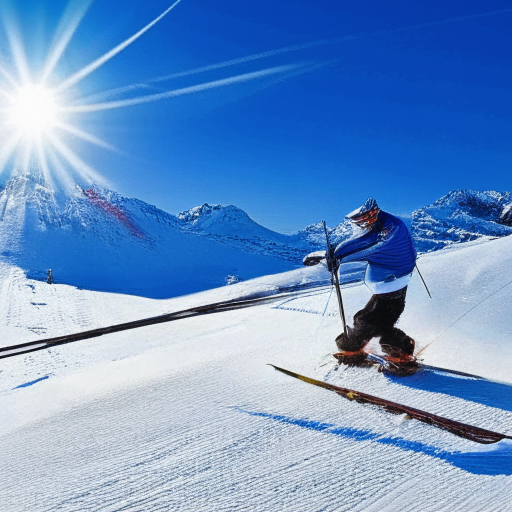Essential Strategies to Protect Your Eyesight from Snow Blindness During Winter Adventures
As winter blankets the earth in a stunning display of white, transforming familiar landscapes into captivating snowy vistas, it's crucial to acknowledge the risks associated with outdoor activities in these frozen environments. One of the most pressing dangers is snow blindness, a temporary but intensely painful condition resulting from prolonged exposure to harmful ultraviolet (UV) rays that bounce off the snow's surface. This comprehensive blog post delves into the complex mechanisms behind snow blindness, examines how sunlight interacts with icy terrains, and presents practical steps for prevention, accurate diagnosis, and effective treatment. By understanding what causes this condition and how to safeguard our vision, we can enjoy the enchanting beauty of winter while prioritizing our eye health.

Unpacking the Medical Definition and Primary Causes of Snow Blindness
The clinical term for snow blindness is photokeratitis, which signifies a temporary injury to the cornea—the eye's outermost protective layer. This painful condition primarily stems from excessive exposure to heightened levels of ultraviolet (UV) radiation, particularly those rays reflecting off snow-covered surfaces. The intensity of sunlight, particularly at elevated altitudes where the atmosphere is thinner, can lead to significant discomfort and may occasionally result in lasting vision problems. Although snow blindness is usually self-limiting, resolving within a short time frame, understanding its underlying causes is vital for implementing effective prevention and management strategies to protect your eye health.
Investigating the Impact of Sunlight on Snowy Environments and Eye Health
To grasp the complexities of snow blindness, it is essential to explore how sunlight interacts with the snow's surface. Sunlight permeates the atmosphere and consists of a range of wavelengths, including potentially harmful ultraviolet radiation. Upon encountering a snow-covered landscape, the unique reflective qualities of snow can bounce back as much as 80% of these UV rays, significantly intensifying exposure levels. This pronounced reflection effect is particularly evident in high-altitude regions where the atmosphere's ability to filter out UV radiation is compromised. Consequently, the eyes may quickly become overwhelmed by excessive UV exposure, leading to possible damage to the cornea, conjunctiva, and other crucial ocular structures.
Recognizing the Symptoms of Snow Blindness for Timely Intervention
The signs of snow blindness typically manifest several hours after exposure to intense UV light. While the severity of symptoms can vary among individuals, common indicators include:
Discomfort and pain in the eyes: Many people experience a gritty sensation, akin to having foreign objects lodged in their eyes.
Redness and swelling: The eyes may appear bloodshot, and eyelids can become swollen and inflamed.
Excessive tearing: Increased tearing occurs as the eyes attempt to flush out irritants and alleviate discomfort.
Blurred vision: Tasks that require clear vision, such as reading or driving, may become increasingly difficult due to visual distortion.
Heightened light sensitivity: Photophobia, or increased sensitivity to light, often accompanies headaches, making it uncomfortable to be in well-lit environments.
Visual disturbances: Some individuals may perceive bright rings or halos around light sources, contributing to visual confusion and discomfort.
Proactive Steps to Prevent Snow Blindness and Safeguard Your Vision
When it comes to protecting your eyes from the damaging effects of UV radiation, proactive prevention is always superior to treatment. Here are several actionable tips to help you significantly reduce the risk of snow blindness:
Invest in quality eyewear: Always opt for goggles or sunglasses that offer 100% UV protection when venturing into snowy conditions. Look for eyewear labeled with UV400 or 100% UV protection for maximum safety.
Choose wraparound styles: Select sunglasses or goggles that wrap around the sides of your face to ensure comprehensive protection against both direct sunlight and side UV exposure.
Utilize wide-brimmed hats: Hats with wide brims or neck flaps can provide additional shade, significantly reducing the amount of UV radiation reaching your eyes.
Monitor the UV Index: Before partaking in outdoor activities, check the local UV Index, which forecasts daily UV exposure levels. Be mindful of minimizing sun exposure during peak hours, which typically occur between 10 AM and 4 PM.
Apply sunscreen effectively: Although it may seem unrelated, applying sunscreen around your face and eyes can significantly lower UV radiation exposure, enhancing your overall protective measures.
Schedule regular breaks indoors: If you plan to spend extended periods in snowy areas, make it a habit to take frequent breaks indoors. This practice allows your eyes to rest and recuperate from the intense bright light exposure.
Relief and Recovery Strategies for Snow Blindness Sufferers
If you find yourself experiencing the symptoms of snow blindness despite taking preventive measures, several strategies can help alleviate discomfort and promote recovery:
Seek shelter: Immediately move to a shaded area or indoors to shield your eyes from further UV exposure.
Remove contact lenses: If you wear contact lenses, take them out to prevent additional irritation and facilitate your eyes' recovery.
Apply cold compresses: Gently placing a cold, damp towel over closed eyes can effectively soothe discomfort and reduce any swelling.
Use artificial tears: Over-the-counter artificial tears can provide temporary relief, keeping your eyes lubricated and alleviating dryness caused by snow blindness.
Avoid bright lighting: Limit exposure to intense light sources, including screens and overhead lights, to lessen the impact of photophobia during recovery.
Rest your eyes adequately: Engage in minimal visual strain activities, steering clear of reading or screen time, to allow your eyes the essential time they need to heal properly.
Knowing When to Consult a Healthcare Professional for Snow Blindness
In most instances, the symptoms of snow blindness will begin to subside within 24 to 48 hours as the cornea begins to heal. However, it is crucial to seek medical attention if symptoms worsen or persist, as delays in treatment could lead to complications or secondary infections that may jeopardize your vision.
Experiencing snow blindness can significantly detract from the enjoyment of winter activities; however, with the right knowledge and preventive measures, we can greatly diminish the risks while fully appreciating the stunning beauty of snowy landscapes. Stay vigilant about UV radiation levels, take regular breaks in shaded areas, and consistently wear protective eyewear. If you encounter any symptoms, seek relief promptly and consult a healthcare professional if necessary. By prioritizing eye safety, you can fully immerse yourself in the winter wonderland and create cherished memories without compromising your vision. Enjoy your winter adventures with caution!
The post Snow Blindness: Understanding Its Causes and Effects appeared first on Survival Bite.
The Article Snow Blindness Causes and Effects Explained Was Found On https://limitsofstrategy.com


This is such an important topic, especially for those of us who love winter sports! I remember my first ski trip where I forgot to pack my sunglasses. The dazzling snow was beautiful but ended up being an unexpected nuisance, as I spent half the time squinting and wincing from discomfort. It wasn’t until I got back and did some research that I learned about snow blindness and how UV rays can be intensified by the reflective nature of snow.